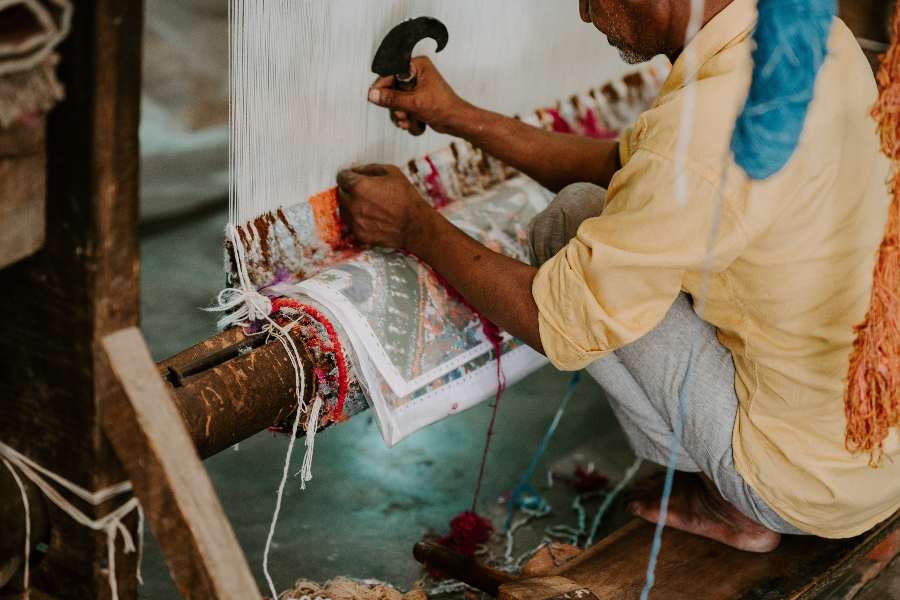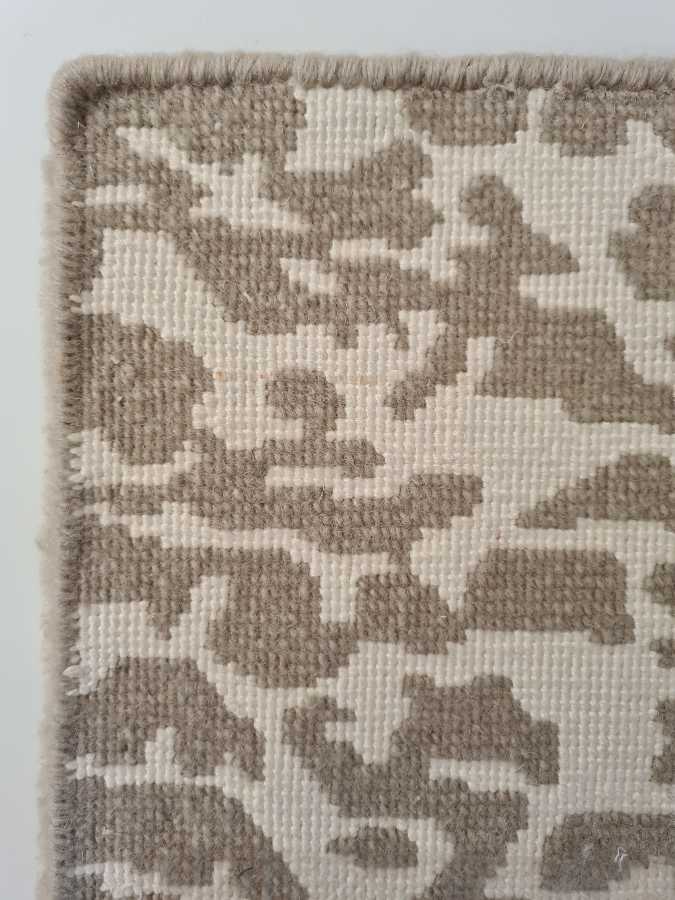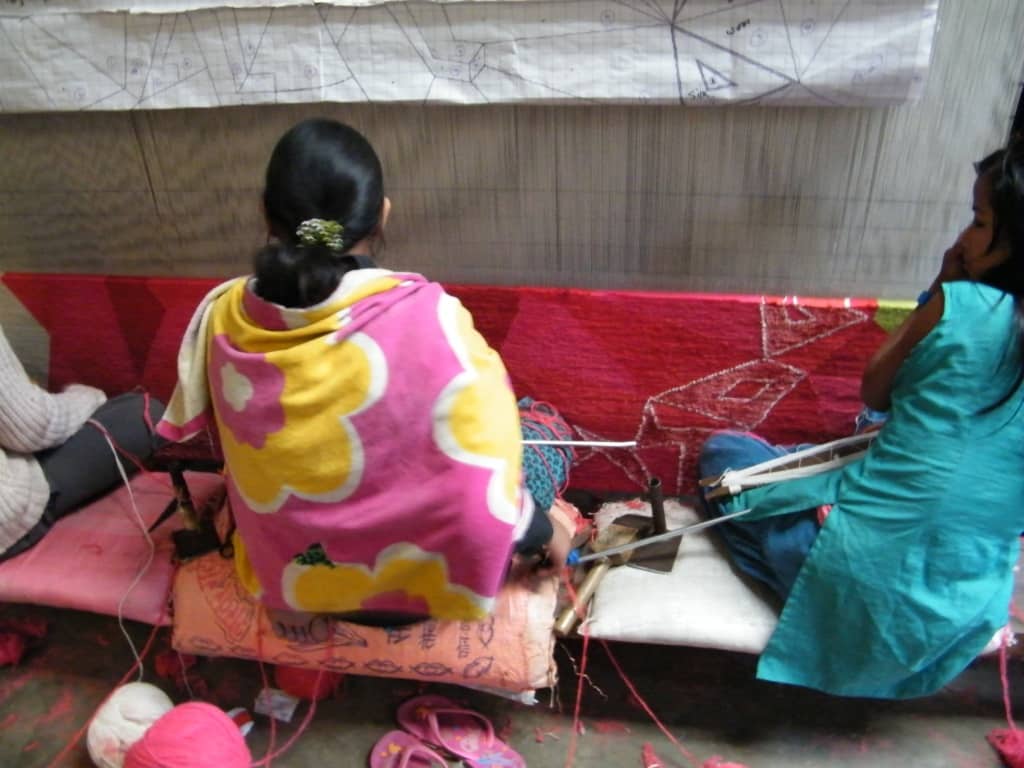How can you tell if a rug is hand knotted?
Design — Materials and techniques — Sep 08.2022
When it comes to assessing the quality and value of a rug, it is essential to know which aspects to analyse in order to verify the type of material and processing techniques used.
Of the various techniques that can be used, hand knotting is the one that yields the highest quality carpets. But how can you recognise a hand-knotted carpet just by looking at it?
Why is it important to be able to recognise hand-knotted carpets?
Buying a luxury carpet is a real investment. The most elegant and prestigious models have a significant price tag and are destined to last for many years. Before buying them, however, it is good to check the actual quality of the product and avoid spending more than the real value of the carpet.
So, how can you tell if a rug is hand knotted? Estimating the value of a hand-knotted carpet created by a master knitter is not easy. The price is influenced by various aspects: the age of the carpet, whether it is an antique model, the materials used, the design and the workmanship.
The high value of knotted carpets is due to the fact that they are made entirely by hand, taking weeks or months of work and involving skilled labour. The time taken for the workmanship and the skills of the knotting craftsmen increase the value, and consequently the price, of the carpet.
Doing a preliminary analysis of the carpet, to check how it has been worked, is an important first step in determining whether it is a genuine hand-knotted carpet, whether it is a hand-woven carpet or whether we are dealing with a machine-knotted carpet that has been finished to resemble a hand-knotted carpet. The differences between the three are not slight.
A carpet may also have been obtained by weaving fibres. This type of carpet can be recognised by its minimal thickness and the absence of pile. The structure of Soumak or kilim carpets, for example, is very different from that of a hand-knotted carpet. And even an inexperienced eye can easily spot the differences.

How can you tell if a rug is hand knotted by analysis of the pile, selvages and fringes
Even at a first glance, important clues can be discerned as to whether we are dealing with a hand-knotted or an automatically knotted carpet.
The pile of hand-knotted carpets may have imperfections or irregularities, which are due to manual processing, whereas the pile of machine-made carpets is perfectly even.
The selvedges of the carpet, i.e. the ends that in a rectangular carpet are usually on the long side, in a hand-knotted carpet are seamless. The selvedges are in fact the horizontal ends of the warp and are part of the innermost structure of the carpet.
The same argument just made for the selvedges applies to the fringes, i.e. the vertical ends of the warp. The fringes may be longer or shorter, their fibres may be slightly twisted or untied, but in any case they are seamless. In machine-made carpets, the fringes are a simple decorative element and are often sewn into the ends of the carpet at the end of the process.

Analysing the back of the carpet
Can any other tips be given on how can you tell if a rug is hand knotted? Certainly. If you get the chance, also carefully analyse the back of the carpet. By looking at the back of the carpet, it is possible to obtain valuable indications, which serve to assess the quality of the carpet and to recognise a hand-knotted piece from one made by a machine.
Even just slightly folding the carpet between your fingers provides important indications. Which is? A hand-knotted carpet offers no resistance and is even between the fingers, with no grooves forming on the surface. In a machine-knotted carpet, on the other hand, its pile usually bends, following lines, and is stiffer.
When a carpet is made by hand, the processing creates vertical lines on the back of the individual piece, representing the arrangement of the knots. In contrast, in machine-made carpets, the knots are usually arranged in vertical lines on the back of the piece.
By turning the carpet, it is also possible to observe the knot structure and the back of the design. In a handmade carpet, the individual knots can be distinguished and the pattern can be clearly seen. In a machine-made carpet, the back of the design may be less visible and the individual knots attached to the warp cannot be seen. Sometimes, moreover, in machine-made carpets, a cloth is attached to the back, which prevents the structure of the knots from being assessed. These details are therefore also useful in understanding how can you tell if a rug is hand knotted and to distinguish it from a piece that has been processed in another way.
Nodus creates prestigious rugs.
Bring luxury into your home!
>>> CONTACT US! <<<
![]() Nodus has reinvented the luxury rug. It was in fact the first brand to propose the concept of the rug as a work of contemporary art.
Nodus has reinvented the luxury rug. It was in fact the first brand to propose the concept of the rug as a work of contemporary art.
Nodus has always created exclusive products that furnish the most beautiful homes in the world. Do you want to make your home inimitable as a work of art?
Bring a hand knotted rug of the highest quality and design into the spaces of your daily life! Give your family and the people you love the beauty of a dream masterpiece! Every piece of Nodus is designed by famous Designers, making it recognisable and prestigious. In this way, each rug is unique: you will not find another one like it. Like all beautiful and unrepeatable things, one piece in the Nodus collection sets you apart and speaks to others about your taste and elegance. CONTACT US!